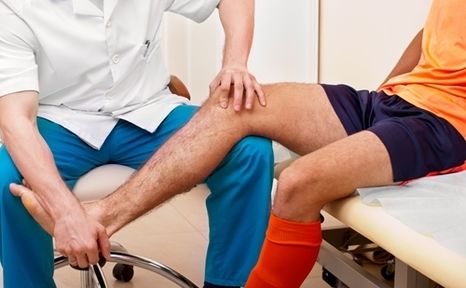

Physical therapy may improve your range of movement and reduce arthritis pain.

Physical therapy may be a useful tool for reducing the symptoms of arthritis. In addition to possibly easing your arthritis pain, it may also improve your dexterity and range of movement, and make it easier for you to do other day-to-day tasks that arthritis might interfere with. But many people don't use physical therapy to its full advantage. If you don't carefully follow your therapist's advice, you could miss out out on important benefits. By making the most of physical therapy, you'll make sure that your joints are getting all the help they deserve.
Physical therapists use their training and experience to help patients with a wide variety of health conditions or injuries learn how to make their body move well. For patients with arthritis, a physical therapist will help you work with your joints to reduce inflammation and relieve pain. Your physical therapist can also demonstrate proper posture and walking form, teach you how to use assistive devices like canes or walkers, and recommend home therapies you can try, such as using heat or cold to reduce arthritis symptoms.
Properly done, physical therapy often has good results. According to the Arthritis Foundation, physical therapy for arthritis may help improve the movement of the joints and reduce loss of movement over time. A physical therapist may also be able to suggest additional aids like sprints and braces. One of the greatest advantages of seeing a physical therapist instead of performing exercises on your own is that the therapist can make sure you're performing exercises correctly, and help gauge your progress.
• Nourish your body. Physical therapy is often hard work, so it's important to eat a full meal a few hours before your appointment. This will keep your energy high as you learn different exercises. Also, bring a water bottle to avoid dehydration.
• Wear the right clothes. If you're wearing something tight or hard to move in, that's going to make it harder for you and your therapist to find your best treatments. Wear loose-fitting clothing that allows movement.
• Communicate and take notes. When your therapist is showing you how to do different exercises or walking you through different treatments, don't be shy about asking questions. It's important for you to understand what they're telling you to do so that you can repeat it when you get home. On the same note, tell your therapist if something is too hard or too easy for you. Physical therapy needs to be tailored to your ability level, so keeping your therapist in tune with what you can do will help you get better results.
• Do the at-home exercises. Some physical therapy patients only do exercises at their sessions, and don't make much progress. Incorporating your recommended home exercises into your daily routine will help you get the best possible results.
Managing Knee Pain
When It Feels Like You Have Done It All
7 Tips to Better Manage Psoriatic Arthritis
Copyright © www.orthopaedics.win Bone Health All Rights Reserved